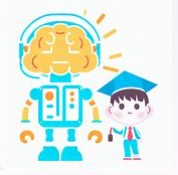How Large Language Models are Changing the Talent Development Landscape
We’re Not in Kansas Anymore
In Lewis Carroll’s Alice’s Adventures in Wonderland, the red queen explains this challenge to Alice, “My dear, here we must run as fast as we can, just to stay in place. And if you wish to go anywhere you must run twice as fast as that.”
As the talent development profession grapples with the emergence of intelligent agents, years ahead of their predicted arrival, it might feel as though you’re trying to accomplish this paradoxical feat as an instructional designer, trainer, leader, or coach. In this post, I endeavor to show things down just a bit, and help you sort out these new players and how they may change the way we work.
We’ve been heading down this path for almost 200 years
While different scholars will debate the exact chronology, we’ve been headed towards this moment for about 200 years, starting with Ada Lovelace and Charles Babbage, and the first efforts to create “machines that think.” So, the first thing we can all do is take a breath and remember that we’ve been headed to this moment for quite some time, and we have many more exciting but potentially disruptive moments ahead of us.
Here are some of the major players
In the past few months, we’ve seen the release of impressive Large Language Models (LLMs) designed to provide a more intuitive and conversational way to engage with computers, led by ChatGPT. But the field has become crowded with many more players since I wrote my last post for ATD, less than two months ago.
ChatGPT Plus
The latest version of ChatGPT is available by subscription only, promising much faster response times and “40% more accurate responses.” The free version, ChatGPT-3, is still available and may be all you need if you’re looking for a virtual assistant to help you tune up your writing and generate ideas. The subscription version promises to address some of the initial issues in the free version, including a distressing pattern of “hallucinating,” platform overload and availability issues, and a much larger character count, which has been increased from 1500 to 25,000 words. This increase allows for longer-form responses, including courses and scripts.
It also is expected to produce “safer” responses, reducing racist, inflammatory, or exclusionary content. While the parent company, OpenAI, hasn’t fully revealed how this latest version was trained, it admits to heavily leveraging feedback from GPT-3 users. (All of us, in other words.) This new version can also work with and create images, so you can ask it to create captions, make new images from a text description or existing images, and it can effectively imitate the style of a writer or artist within a new creation.
There are a growing number of interesting plug-ins and applications listed on the company’s site, including some for learning new languages, mapping massive content databases, and other interesting capabilities.
Microsoft Bing
If you want to give GPT-4/Plus a test-run before buying a subscription, look no further than Microsoft’s Bing, the default search engine available on the Edge browser. If you haven’t been on Edge in a while, you’ll notice a new “co-pilot” panel on the right. That’s where Bing will suggest additional search terms, summarize lengthy articles or websites, or create new content if properly instructed. You can also tap into the image generation power of DALL-E by choosing the Creator button. I tried a simple prompt, brain+robot+student and got these options on my first try. I could continue to refine these images with successive prompts if desired. Could purchasing large license-free images become obsolete? There are still some major legal considerations ahead of all these generative models, so be careful how you use these generated images, and whose content may be serving as the foundation for the AI’s output.

Marrying the GPT-4 algorithm with Edge may be Microsoft’s answer to the widespread popularity of Chrome, so some of us may have a decision ahead, depending on how Google responds with its entry into the fray: Google Bard.
Google Bard
Google’s entry into the LLM market will compete with and eventually surpass GPT Plus on a number of fronts, including writing and editing computer code, with the ability to cite its sources. I’ve only just started working with Bard, but it has already gained my interest. In response to a prompt from another user, it reportedly warned that Google was getting too powerful.
And then there are more
There are many more alternative AI platforms that offer some or all of the features claimed by the major players. While there are too many to review individually in this post, you can see a summary of several options and give them a try here.
What can you do now?
For now, I’m doing my best to stay informed and stay open to new possibilities, which is my advice for all of us. Be careful not to commit too much money or resources to any one option until we see how the market shakes out. Think about what tasks you would like to automate or streamline and go from there.
Keep an Open Mind about the Future
In the film version of Frank L. Baum’s book, The Wizard of Oz, Dorothy says to Toto, “I’ve a feeling we’re not in Kansas anymore.”
That’s a great metaphor for where we are in the learning profession, due to the rapid adoption of these new LLMs. It may be a little scary at first, but we can’t stand still, so we may as well step forward. I’ll continue to keep you updated in this blog, and my book, AI in Talent Development, is a great place to start.
Book Your BrainyBotâ„¢ Discovery Session with Margie
Learn how you can transform the learning experience in your organization. Start your journey with 30-minute discovery session.